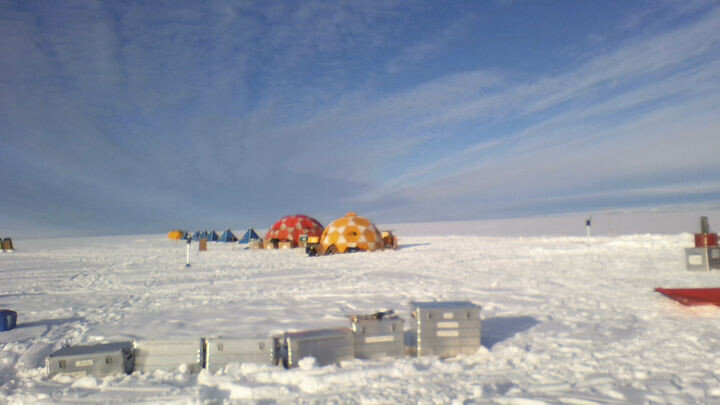In areas where the average temperature is around -50 degrees Celsius, it rises to -10 degrees Celsius.
U.S. research team says natural variability in Antarctic climate is the cause
Temperatures could rise by up to 6 degrees due to climate change
It was found that in March of last year, temperatures near the east coast of Antarctica soared 39 degrees higher than normal.
According to the Washington Post (WP) on the 24th (local time), in a survey conducted in March last year by a research team led by atmospheric scientist Edward Blanchard-Riggleworth of the University of Washington, Antarctica was recorded as the place where the strongest heat wave occurred on Earth.
The average temperature on the east coast near Antarctica Dome C in March, when Antarctica’s season changes to fall, was -54 degrees Celsius, but on March 18 last year, the temperature hit -10 degrees Celsius. The temperature was higher than the highest temperature ever recorded during the summer in Antarctica.
Researchers at the site at the time were wearing shorts, and some even took off their shirts to enjoy the (relatively) warmth.
“It was such a surprising event,” said study author Blanchard-Riggleworth. “We found that the extraordinary temperature increase of 39 degrees Celsius was the highest ever measured anywhere in the world.”
In the study, Blanchard-Riggleworth and her colleagues looked at how heat waves could occur during times of low sunlight. The research team found that the natural variability of Antarctica’s climate, rather than global warming, was the cause of the heat wave.
Typically, winds around Antarctica blow from west to east. It blocks warm air from the northern region and keeps Antarctica cold.
The Antarctic heatwave began with unusual winds, Blanchard-Riggleworth said. As the wind curved, a mass of warm air from southern Australia moved east of Antarctica in just four days.
“This is probably the first time we’ve ever moved that fast in such a short period of time,” Blanchard-Riggleworth said.
The study found that large weather fluctuations are not a completely unusual phenomenon in polar regions. After analyzing data from global meteorological observatories and computer simulations, the research team found that the largest temperature changes above normal occurred at high latitudes. Abnormal heat waves like this rarely occur in areas below 48 degrees latitude in Europe or the United States.
Blanchard-Riggleworth explained that at higher latitudes, large temperature anomalies occur because there is more cold air to be removed near land.
Air generally gets colder in the atmosphere, but in high latitudes where there is a lot of snow and ice, there are cases where there is colder air near the land and warm air above it, called an ‘inversion layer’.
In these places, warm air masses overtake cold air, creating warm weather. This phenomenon often occurs in and around winter when the ‘inversion layer’ is strongest.
Blanchard-Riggleworth said that Antarctica’s heat waves were also caused by this phenomenon.
The study claims that global warming does not play a major role in increasing temperatures, but the impact of climate change is still being investigated. The research team ran a computer model that ran scenarios depending on whether greenhouse gas emissions would increase. As a result, they found that climate change increases heat waves by about 2 degrees. By the end of the century, climate change could increase temperatures by another 5 to 6 degrees.
Blanchard-Riggleworth said she was concerned that more heat waves like this in Antarctica could have a serious impact on the ice sheet.
“If it gets 5 or 6 degrees higher, we are getting closer to the melting point,” he said, adding, “If these heat waves become more common in 50 or 100 years, we may have consequences that we did not expect.”
Source: Donga
Mark Jones is a world traveler and journalist for News Rebeat. With a curious mind and a love of adventure, Mark brings a unique perspective to the latest global events and provides in-depth and thought-provoking coverage of the world at large.




